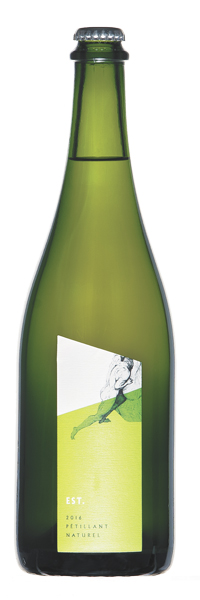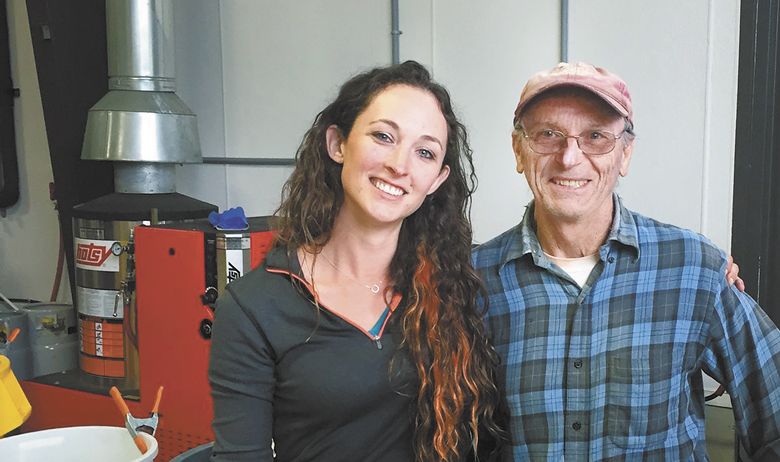The Changeup
New column explores Oregon’s oddball bottles
The changeup is a baseball pitch that resembles a fastball when leaving the pitcher’s hand. In reality, it’s a slower pitch that suddenly drops approaching home plate. That bit of deception throws off a batter’s timing, triggering a look of surprise as he flails at a phantom fastball. That’s the look I’m after with this column.

Oregon’s winemakers have developed effective fastballs over the years, dazzling consumers with traditionally made Pinot Noir, Chardonnay, Syrah, etc. Our wine regions are known for their signature grapes, but every so often a winemaker pitches a wine that surprises. I’ll be out there searching for those “off-speed” wines, the ones that cause even savvy locals to remark, “Wow, I had no idea that was being done in Oregon.”
The wine may come from a winery that’s been around for 40 years or from new kids on the block. If it tastes good and I have to leave the beaten path to find it, I want to bring it to your attention. To that end, a sparkling Sauvignon Blanc from a remote section of the Willamette Valley represents the perfect opening pitch.
Travel a few miles south of Oregon City and you will discover rolling hills, glorious horse farms and lots of nouveau landed gentry. Tucked away in those hills is a four-acre vineyard owned by gentleman farmer Bruce Weber. His vineyard, planted in 1982, sits 450 feet above sea level in the eastern section of the Willamette Valley AVA. These days, the vineyard’s 35-year-old dry-farmed, own-rooted vines rise thick and gnarly from red Jory soil — like a miniature version of the haunted forest in “The Wizard of Oz.”
Pinot Noir is the vineyard’s focus, but Weber liked to experiment back in the day. Amid the Pinot, he planted one row — 33 vines — of equal parts Sauvignon Blanc, Riesling and Cabernet Sauvignon. As time went by, the Sauvignon Blanc outperformed others, so Weber grafted them all over to the winning white. Even in 2017, Sauvignon Blanc isn’t exactly a household grape in the Willamette Valley, but, back in 1982, most people considered it foolhardy to even consider planting it. Fortunately, Weber didn’t pay any attention.
A few years ago, Weber’s vineyard caught the eye of a talented winemaker, Meredith Bell, who grew up just a few miles away. She is currently the assistant winemaker at three other Willamette Valley wineries and partners with Luke Wylde in Statera Cellars, Oregon’s first Chardonnay-only winery.
Bell learned about the vineyard from family members who are friends with Weber, so she decided to pay him a visit. She quickly realized the vineyard was special, sacrificing her free time to help him manage the vines. Eventually, she created a new winery devoted to Weber’s grapes: EST. Wines — the name is short for Eastern Standard Time due to the vineyard’s location. With help from Weber and Wylde, Bell has created a most unusual and compelling sparkling wine.
Bell’s 2016 EST. Sauvignon Blanc Pétillant-Naturel is one of only two sparkling Sauvignon Blancs made in the U.S., and the only one made with the ancient pétillant-naturel technique. Also known as pét-nat, it refers to a sparkling wine which, unlike Champagne, is bottled without additives before primary fermentation finishes. The method captures naturally occurring CO2 inside the bottle, resulting in a wine that is lightly effervescent, often cloudy and, in skilled hands, ultimately refreshing. It was also the perfect technique for Bell and Wylde.
“With both EST. and Statera, our focus is to make wines that express place, with life and character, and without the use of additives.” Bell explained. “Traditional sparkling winemaking requires lab yeast, sugar and often DAP (diammonium phosphate), so we weren’t interested in that. Pét-nat seemed more respectful of the fruit and of the vineyard.”
To create her sparkler, Bell used whole-cluster grapes, stems and all, and let them soak on their skins for two days. After a long, hard press, Bell added a tiny bit of sulfur and placed the wine in two neutral oak barrels. The still-fermenting wine was bottled under a crown cap a mere 11 days after Weber picked the grapes. Disgorgement took place Feb. 15, 2017.
The wine clocks in at 13-percent alcohol, and its hazy lemon color hides the bubbles. As I poured, brioche and citrus notes filled the air, much like traditional Champagne. Afterward, matters became distinctly untraditional, an aroma of fresh-picked basil developed, followed by successive bursts of lemongrass and saline. That aromatic combination made me want to grab the bottle and head to either the nearest beach or Thai restaurant — I wasn’t sure which.
As the wine swirls about the mouth, its lazy bubbles tickle just enough to announce their arrival. The wine is tart and dry, with acidity so zippy, your mouth will water like a neighbor with green grass in August. Its spicy quality Bell attributes to not removing the stems, yet notes of icy lemon granita and mineral-driven quinine dominate the palate. No matter what flavor popped up, however, I kept coming back to the acidity.
“Bruce warned me the natural acidity in his Sauvignon Blanc grapes was difficult to get low enough, so [making it into a sparkling] was a no-brainer,” Bell stated.
That brisk acidity is one this wine’s best qualities, with each invigorating sip displaying the life and character Bell seeks in her wines.
Weber continues to cultivate high quality grapes in the eastern part of the Valley, and Bell, with help from Wylde, clearly knows what to do with them.
This unique sparkling is worth seeking out; sadly, there were only 33 cases produced. I know, it hardly seems fair, but think about that moment you pour it for your friends, and they look up from their glass with a pleased look and muse, “Wow, I had no idea that was being done in Oregon.”
Michael Albety is a wine writer based in the vibrant community of Tualatin. He has published in areas as diverse as international environmental politics, coffee and baseball. Long ago, he left academia to enjoy lengthy careers in natural foods, espresso and wine retail. While he lives and dies with the fortunes of University of Kansas basketball, the Chelsea Football Club, the KC Royals, KC Chiefs and Portland Thorns, he is also occasionally saddened if the wrong person wins “Top Chef.”









